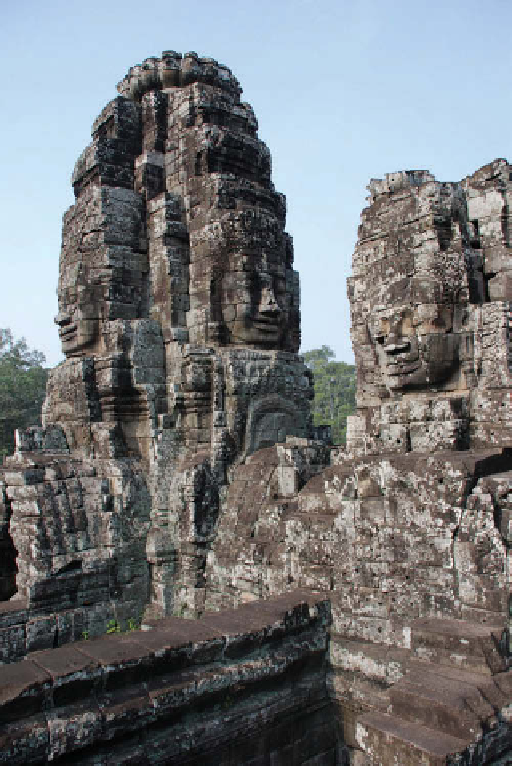Geography Reference
In-Depth Information
Ganges River and diffused throughout South Asia and
into Southeast Asia before the advent of Christianity. It
fi rst attached itself to traditional faiths and then slowly
replaced them. Later, when Islam and Christianity
appeared and were actively spread in Hindu areas, Hindu
thinkers attempted to integrate certain new teachings into
their own religion. For example, elements of the Sermon
on the Mount (Jesus' sermon in which he described God's
love for the poor and the peacemakers) now form part of
Hindu preaching, and Christian beliefs contributed to the
weakening of caste barriers. In other instances, the con-
frontation between Hinduism and other faiths led to the
emergence of a compromise religion. Islam stimulated the
rise of Sikhism, whose followers disapproved of the wor-
ship of idols and disliked the caste system, but retained the
concepts of reincarnation and karma.
Given its current character as an ethnic religion, it
is not surprising that Hinduism's geographical extent is
relatively small. Indeed, throughout most of Southeast
Asia, Buddhism and Islam overtook the places where
Hinduism had diffused during its universalizing period.
In overwhelmingly Muslim Indonesia, the island of Bali
remains a Hindu outpost. Bali became a refuge for Hindu
holy men, nobles, and intellectuals during the sixteenth
century, when Islam engulfed neighboring Java, which
now retains only architectural remnants of its Hindu age.
Since then, the Balinese have developed a unique faith,
still based on Hindu principles but mixed with elements
of Buddhism, animism, and ancestor worship. Religion
plays an extremely important role in Bali. Temples and
shrines dominate the cultural landscape, and participation
in worship, festivals, and other ceremonies of the island's
unique religion is almost universal. Religion is so much at
the heart of Balinese culture that it is sometimes described
as a celebration of life.
Outside South Asia and Bali, Hinduism's presence is
relatively minor. Over the last two centuries, Hinduism
has diffused to small parts of the world through migra-
tion. During British colonialism, the British transported
hundreds of thousands of Hindu adherents from their
colony of India to their other colonies in East and South
Africa, the Caribbean, northern South America, and the
Pacifi c Islands (see Fig. 7.2). Because Hinduism is not a
universalizing religion today, the relocation diffusion pro-
duced pockets rather than regions of Hinduism.
Figure 7.7
Angkor Wat, Cambodia.
The extensive, walled structure at
the temple complex in Angkor Wat marks the earliest period of
Hinduism's diffusion into Southeast Asia. Eventually, Buddhism
supplanted Hinduism in Cambodia, and many Hindu temples
such as this now suffer from neglect and destruction.
© Alexander
B. Murphy.
especially in the lowest of the castes and in those consid-
ered beneath the caste system, Dalits. Until a generation
ago, Dalits could not enter temples, were excluded from
certain schools, and were restricted to performing the most
unpleasant tasks. The coming of other religions to India,
the effects of modernization during the colonial period, the
work of Mahatma Gandhi, and affi rmative action policies
helped loosen the social barriers of the caste system. The
Indian government's affi rmative action policies reserve
seats in universities and jobs in government for scheduled
castes, scheduled tribes, and Dalits.
Buddhism
Buddhism
splintered from Hinduism over 2500 years
ago. Buddhism and several other religions appeared in
India as a reaction to questions about Hinduism's teach-
ings at the time. Reformers questioned Hinduism's strict
social hierarchy that protected the privileged and kept
millions in poverty. Prince Siddhartha, who was heir
to a wealthy kingdom in what is now Nepal, founded
Diffusion of Hinduism
As Figure 7.8 shows, Hinduism evolved in what is
today Pakistan. From there, Hinduism migrated to the











































